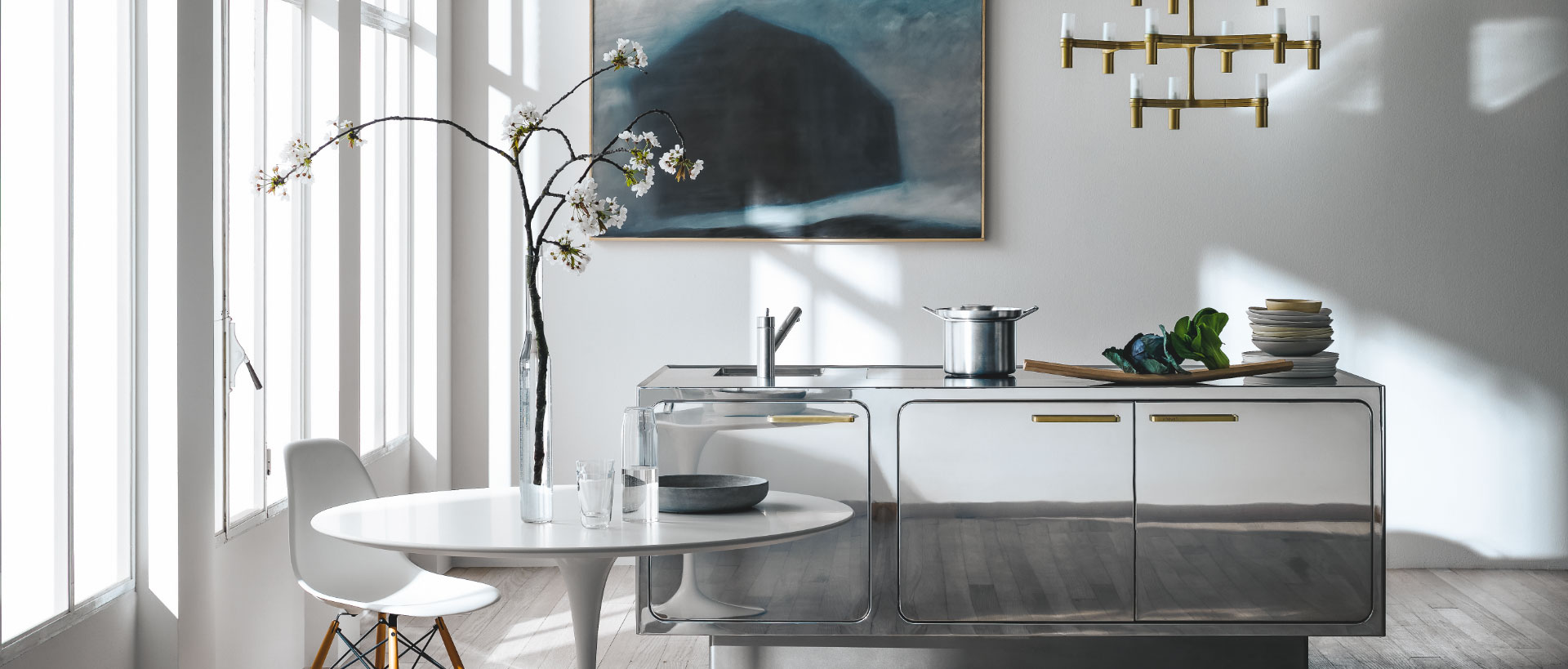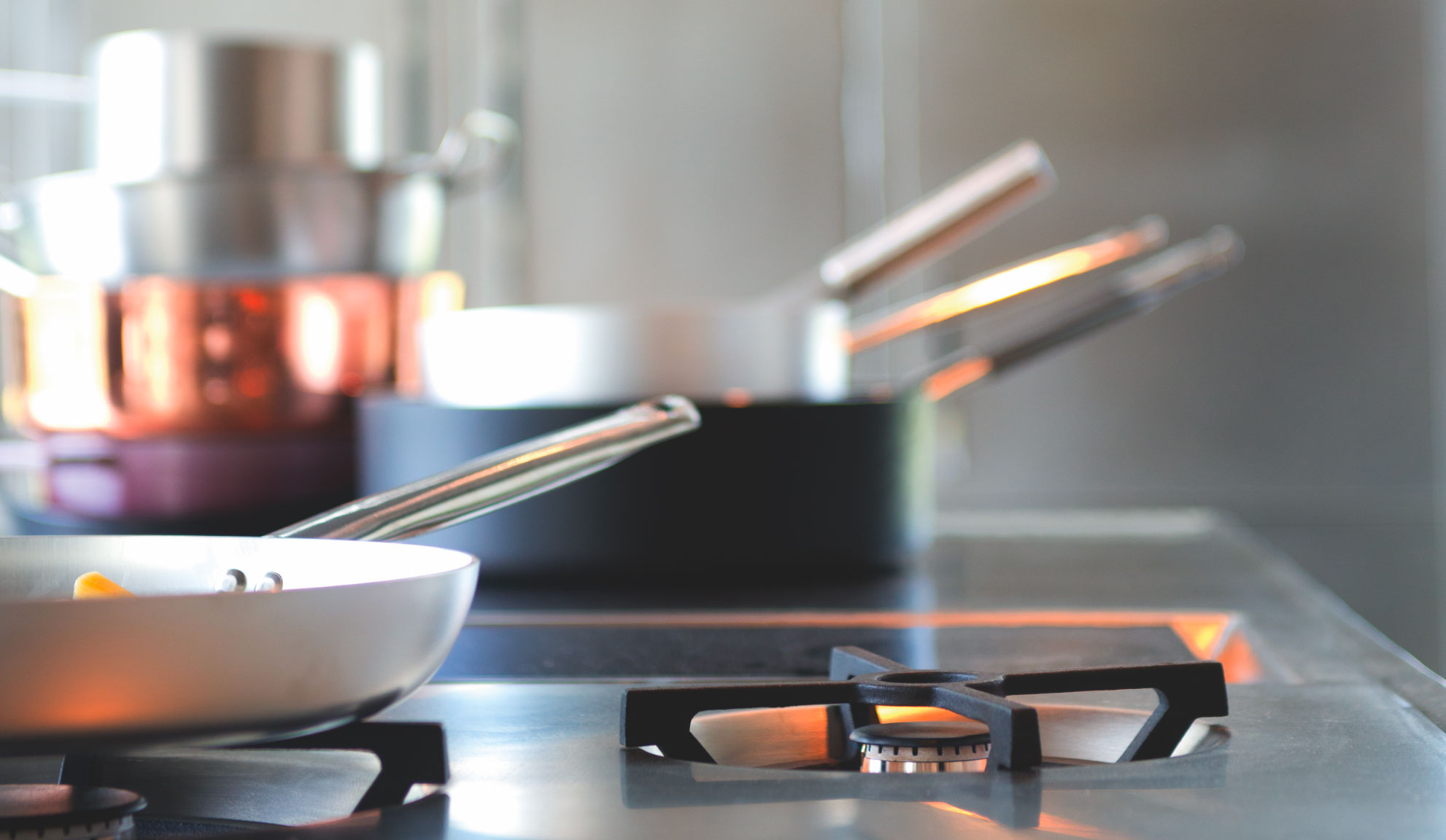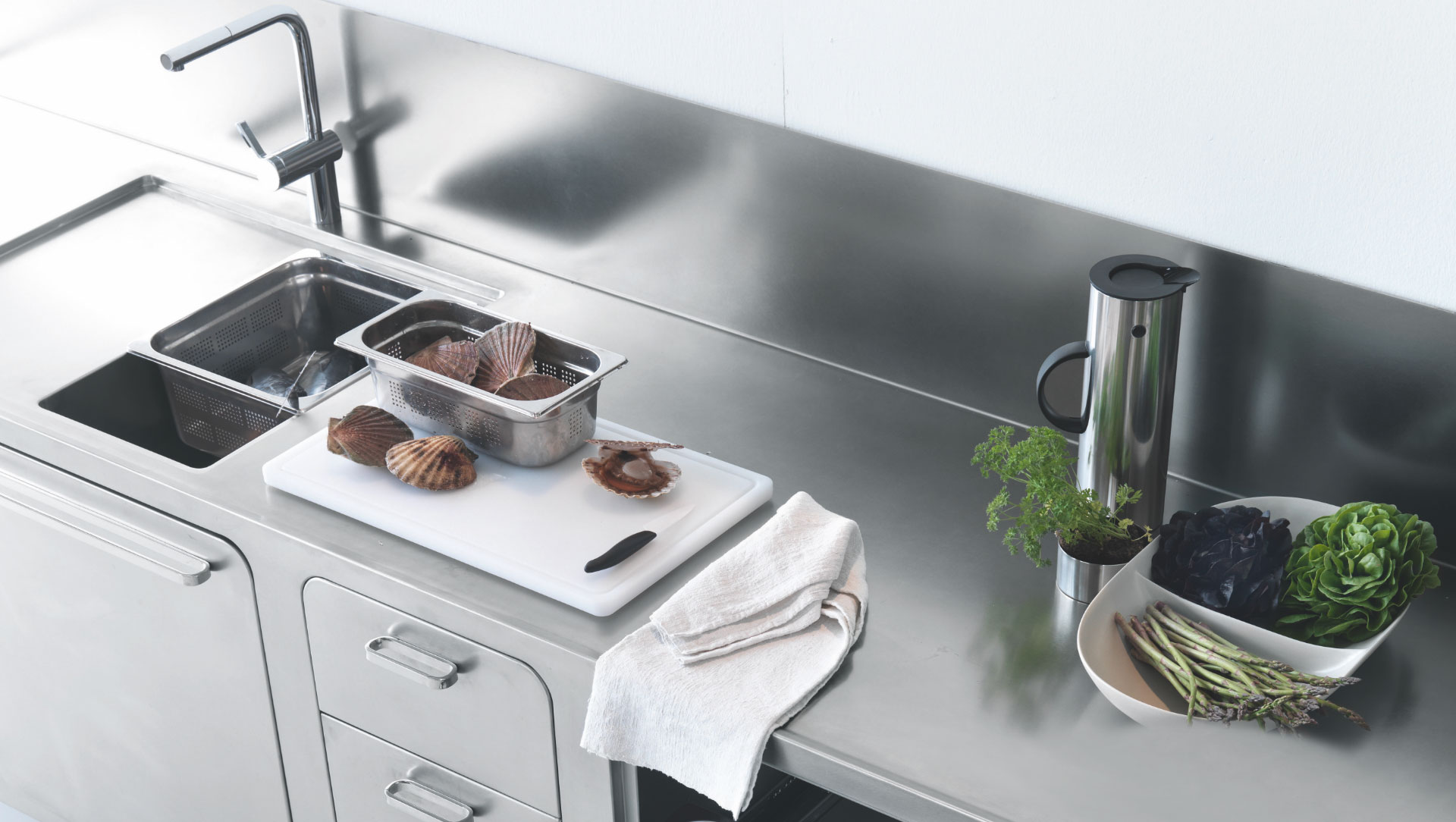Stainless steel is hard-wearing and easy to clean, making it the ideal material for kitchens. Only one word of warning: clean the surfaces correctly.

— WHAT TO CHECK
Check your kitchen every day for any left-over:

1. Stains or food residue
To guarantee correct cleaning and maintenance of stainless steel kitchens, check the areas which come into contact with food more carefully, including the worktop, the sink and the hob.
Indeed, these areas tend to get dirty with food residue more easily and, unless they are cleaned regularly, the dirt build-up could become difficult to remove or, in the case of acidic food, damage the stainless steel outright.
2. Drops of water
When water dries on stainless steel, it leaves ring marks on the surface due to the limescale it contains. The “harder” the water, in other words the richer it is in limescale, the more evident these ring marks will be.
That’s why it is always advisable to dry the sink thoroughly and make sure no drops of water remain in the kitchen.
3. Ring marks and finger marks
The areas of the kitchen you should check and clean most regularly are those where you leave finger marks on the stainless steel, especially the worktop, the cabinet doors and the areas around the handles. It is so simple to wipe them off immediately. Leaving them on the stainless steel for an extended period of time could make them much tougher to remove.
— WHAT NOT TO DO
Stainless steel is a nearly eternal material, if it is well looked after. It is extremely resistant to knocks, corrosion and to high temperatures. It is biologically pure and, therefore, antibacterial. And, owing to its smooth surface, it is extremely easy to clean. However, there are certain things which must be avoided at all costs to avoid compromising its characteristics.

1. Do not use abrasive sponges or metal wire pads
This may seem like an obvious thing to point out, but in actual fact a fair few people make this mistake, causing scoring and even obvious scratches on the stainless steel surface. To remove tougher spots of dirt, you do not need to rub the stainless steel. Using specific products is enough.
2. Do not use bleach and chlorine- or iodine-based detergents
Indeed, these substances reduce the resistance to corrosion of stainless steel and compromise its gleam and lustre. Should they unfortunately come into contact with stainless steel, our advice is to rinse the surface immediately with plenty of water.
3. Also avoid leaving scissors or other iron objects on stainless steel surfaces (especially if these are wet or even just damp)
This small precaution will avoid the formation of unpleasant rust stains, which are quite tough to remove.
4. Avoid prolonged contact with acidic food
Stainless steel boasts good resistance to acidity. Nevertheless, prolonged contact with acidic food may dent and damage it. So do not leave acidic food (or food residue, such as fruit peel) on the stainless steel surface for too long. Specifically, beware of citrus fruit (even unpeeled!), tomatoes, strawberries, fruits of the forest, kiwis, etc.
— WHAT TO DO
To guarantee the utmost durability and shine of your stainless steel kitchen, just follow these few simple rules.

1. Use neutral, non-aggressive detergents
For the routine maintenance of surfaces or to remove food stains or inevitable “finger marks” left on stainless steel, simply use ethyl alcohol (or a solution of water and alcohol). The liquid can be sprayed or vaporised directly onto the surface and then wiped dry with a soft, dry cloth. The shiny gleam effect will be guaranteed.
2. Use natural solutions for routine cleaning
You can also use natural solutions to clean stainless steel, such as vinegar and lemon. The former comes in handy to sanitise and polish stainless steel, removing the prints our hands leave behind. Lemon is an excellent remedy to degrease and remove limescale. In this case, all you need to do is spread lemon juice onto limescale stains, leave for a while and then rinse off. We recommend these two natural remedies because they have the definite advantage of being green as well as effective.
3. Always use a soft, dry cloth
To clean stainless steel, it is preferable to use a cotton cloth or some soft kitchen roll. The kitchen roll or cloth should also be replaced often and must be perfectly clean and dry, otherwise they could leave ring marks behind.
For better results, we recommend you clean orbitally polished stainless steel by rubbing it in a circular motion with the cloth. On the other hand, satin finish stainless steel should be cleaned in a straight line (horizontal or vertical), preferably following the direction of the stainless steel.
4. For tougher stains, use sodium bicarbonate or specific products
For tougher dirt, using sodium bicarbonate mixed with a little warm water is very effective. The result is a thick cream which you should spread onto the stainless steel surface and leave to take effect for a few minutes and then rinse off, wiping the surface dry with a microfibre cloth.
Moreover, specific products – such as cream detergents – are available on the market for the extraordinary cleaning of stainless steel surfaces. Simply spread the cream gently onto the surface with a damp cloth, leave to take effect for a few seconds, rinse off with plenty of water and then wipe dry with a dry cloth. The result is guaranteed.
5. Order the cleaning kit for Abimis stainless steel kitchens
Abimis offers a special cleaning kit to guarantee correct maintenance
of all stainless steel kitchens. To find out how much the cleaning kit costs and have it delivered to your home, simply send us a no strings attached e-mail to info@abimis.com with your name, address and the kit number you wish to order.




